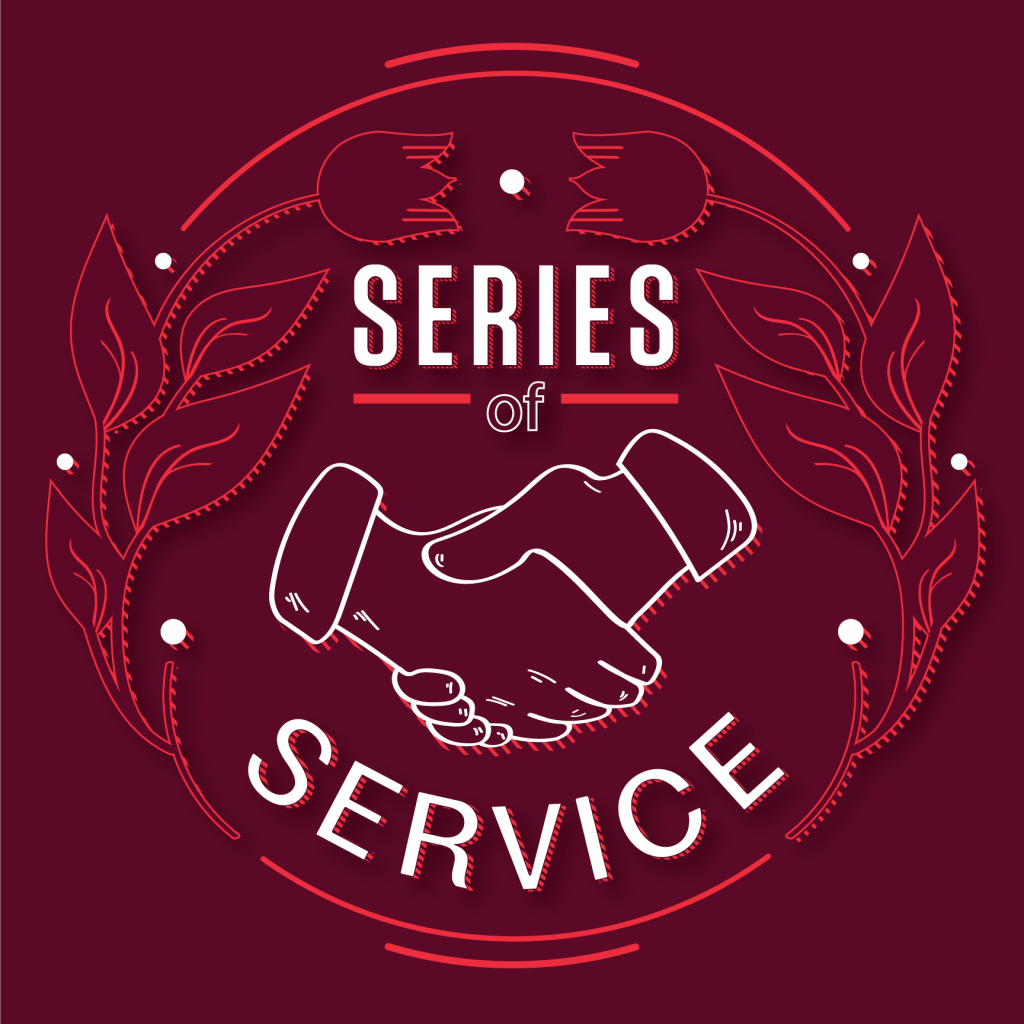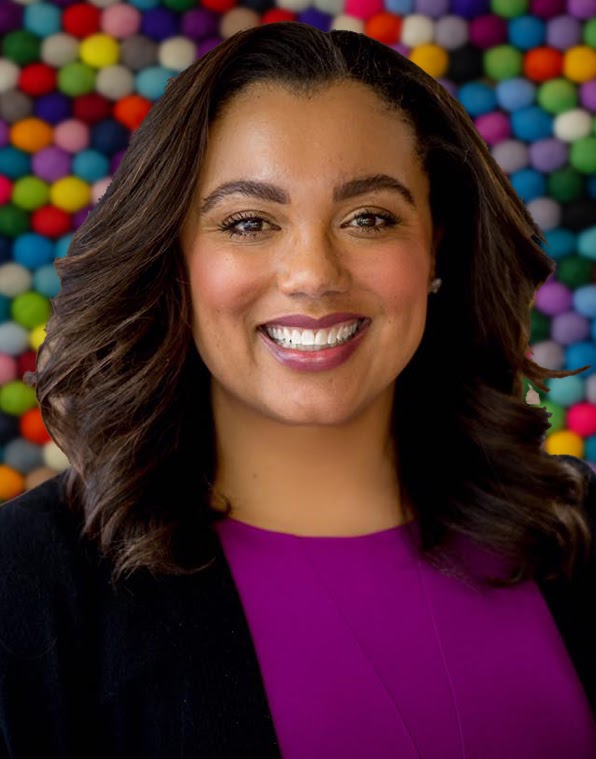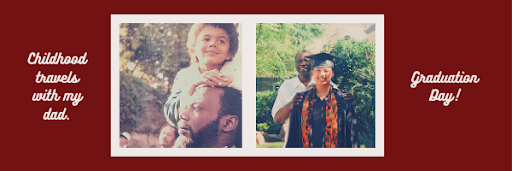Kamilah Jones ‘99: Carrying on the Family Legacy
Kamilah Jones ‘99 leads in her father’s footsteps to make Texas A&M University a place that’s welcoming to all and capable of producing the highest quality leaders of tomorrow.

By Rachel Knight ‘18

Kamilah Jones ’99 continues her family’s legacy of making Texas A&M a welcoming place to all and capable of producing the highest quality leaders for tomorrow.
The late Dr. Woodrow “Woody” Jones, Jr. was the first Black dean in the history of Texas A&M University. Today his daughter, Kamilah Jones ’99, carries on the legacy he helped build in both the Jones and Aggie families.
Like her father, Kamilah is a dynamic leader. She uses what she learned from her family, cultural experiences, and the College of Liberal Arts to mobilize consumers and communities toward social impact by delivering award-winning brand experiences. She’s developed marketing communications programming for major brands like Verizon, Lexus, McDonald’s, Teach for America, PepsiCo, Obama for America, and Sun Chemical, to name a few.
In this interview with Kamilah, which has been condensed and edited for clarity, we learned more about what she’s up to now and how she’s carrying forward her family’s legacy.
Tell me a little about your childhood.
The foundation of my childhood was faith, learning, and culture. I grew up in San Diego, California, where my dad was a political science professor at San Diego State University. I spent a large part of my childhood traveling around the world and spending time on university campuses.
My parents were committed to building and empowering communities, so I spent a good portion of my upbringing giving back—whether that was volunteering at homeless shelters, teaching systemically underserved students, or serving HIV-positive children in Kenya. By focusing on meeting their needs and taking the time to understand their experience, I became committed to continuing the work as an adult and developed more compassion for our collective humanity.

Why did you decide to study at Texas A&M University?
Some might think this was an effortless choice because of my father, but I actually had my heart set on Stanford. That said, a few key moments happened during my last two years of high school that changed my trajectory completely.
First, my sister, Halimah Jones, was born. When I graduated from high school, she was a vibrant 2-year-old, and there was no way I would miss being present during her childhood.
Second, I started thinking more deeply about my college experience. I loved growing up in southern California, but I also desired to experience something different in terms of culture and exposure. Choosing Texas A&M was the best decision for me because I met people I would never have met had I decided to stay on the west coast.
Why did you choose journalism as your major?
Like a true freshman, I came to school with dreams of grandeur, and I was certain that I would end up working for the CIA. In my dream, what that really meant was that I would be able to speak ten languages, have fabulous outfits, run in high-heeled boots and save the world. That was my vision at 17.
I told my dad this vision, and he gave me a very parental, “Get your life together” look. Anyone who knew my father knows that his personality was straightforward and direct, but with a smile and laugh to make his realistic view digestible. After that look, he turned to me and said, “You love people. You love culture. You love a good story. You’re a journalism major.”
As my college journey continued, I realized he was right. I enjoy communication, developing the narrative, and helping people and brands tell their stories.

Who were your favorite professors at Texas A&M?
There are so many professors and staff members who impacted my experience. One professor was Dr. Rick Rigsby, a communications professor and a chaplain for the football team. His ability to connect with students and speak truth to power was inspiring for an outspoken student like myself.
Additionally, Mrs. Wanda Williams in the Department of Multicultural Student Services was a mother to every student that crossed her path. She checked in on us, made sure we practiced self-care, and was a champion for pushing us to develop our leadership platforms.
Something unique to my experience because of my father is that I could interact with many professors outside of class and learn from them in casual settings. When you think about the professors that we have within the College of Liberal Arts, the level of talent at Texas A&M is unmatched. No matter what their expertise, I always wanted to learn more.
Your dad was a pillar in the College of Liberal Arts and a champion of diversity at the university. How has your relationship with him influenced your opinion of both the college and the university itself?
If you are a daughter of Dr. Jones’ you are raised to be a leader.
When I arrived at Texas A&M, yes, I was Woody’s daughter, but I also was independent and led within my cohort. I got involved right away in different campus organizations, and I started mentoring incoming students from diverse backgrounds to ensure they had an inclusive experience.
Early on in my college journey, my father introduced the multiculturalism requirement for general education courses. There was immediate pushback on campus, even within the student body. There was deep resistance to having to learn about the fullness of our diverse human experience.
Yet, while there was resistance, many students were incredibly excited and engaged by the updated requirement. We felt that it was beneficial for all students to learn more about cultures outside of their own to create stronger leaders who could further impact our global society. We organized a march in support of the requirement and also had several meetings with university leadership.
Ultimately, the requirement moved forward and is a lasting part of my father’s legacy. The university created space for that necessary, healthy dialogue to get to a place of shared understanding and collective leadership to move forward. That experience is why I intentionally make space on teams I lead to have courageous conversations, especially on diversity, equity and inclusion. It’s crucial to facilitate shared understanding and collective impact.
What do you consider your dad’s legacy at Texas A&M?
My dad’s legacy is alive within the College of Liberal Arts and across the university today. From curriculum to faculty to expanded degree programs, he was an innovator and had a clear vision for liberal arts being the university’s heart and soul.
Every time I run into former students or staff, the first thing they do is talk about my father. He was an advocate for people. He deeply respected the work of faculty and believed in strengthening diversity, equity, and inclusion. He would fight for students, talk with parents, and give second chances when hope seemed lost. First-hand, he knew that a college degree could provide generational impact and spent his personal time mentoring students. Any given Sunday, there would be students at our house for dinner because he took that time to ensure both undergraduate and graduate students were thriving.
When you’re the first at anything, especially the first Black American to make that accomplishment, you’re the one that carries the legacy of your community with you. The truth is my dad faced deep-rooted adversity when he took on the role because of his race, and yet he also had strong allies who rallied around him so that he could bring his vision forward. He had an incredible development council with Eddie Burge, G. Philip Huey, and others who stood by him as both thought partners and friends.
Walk me through your career path.
For over 15+ years, I’ve led integrated marketing communications campaigns at both leading agencies and global corporations focused on diversity, social impact, and advocacy.
One of my favorite agency campaigns was the Verizon Realize campaign. We focused on the entrepreneurial spirit of Black and LatinX communities, featuring real Verizon customers and their business ventures. The campaign obtained more than 1 billion impressions, contributing to the American Advertising Federation Mosaic Award and Ad Age Multicultural Agency of the Year Award. I’ve also led national rebranding efforts for Beam Suntory Brands and developed experiential event strategies for Lexus and McDonald’s.
During my tenure at Sun Chemical, I led creative marketing and color trend forecasting, using global insights to forecast what colors would sell for our partners. My job was to decide what color trends you would buy in major retailers, like Target, two years from now. If you’ve watched the scene in The Devil Wears Prada, where Miranda goes through the color cerulean blue and tells Andrea why she chose to wear that specific color, that sums up what forecasting is all about. Yes, there are entire teams that decide what you will buy based on global insights and trends before you’ve had the chance to think about it.
After spending many years in the corporate space, I felt called to use what I’d learned for more significant systemic impact. I joined the leadership of Teach For America, where I led national-level brand campaigns as the vice president of brand marketing and digital strategy. While at TFA, I also created a culture of innovation as the vice president of innovation and brand experience in an org-wide effort to create an audience-centric experience that increased brand perception and program effectiveness.
I most recently served as SVP, head of marketing and external affairs for New Teacher Center, where I led cross-functional teams to drive brand marketing and diversity, equity, and inclusion strategies to increase programmatic reach, operational effectiveness, and brand visibility.
As the founder of Maven Jones, my focus is on building brands and empowering communities for collective impact. I partner with organizations to help them discover the powerful intersection of brand marketing and social impact by delivering exceptional brand experiences. Over the years, I’ve developed and executed marketing communications programming for the National Urban League, PepsiCo, and Obama for America.
Where do your family beliefs stem from?
It was imperative to my grandparents that all of their children received a high-quality education and graduated from college. My father and his three brothers graduated from undergrad and went on to earn graduate degrees, which elevated the trajectory of our family.
Understanding my family’s generational experience and profoundly appreciating the sacrifices made for me, it’s a joy to carry that imperative forward. Ensuring that my son has a trajectory full of opportunity is the easy part. But I think it’s really about what we are going to do for the collective community, and I mean the collective community in the broadest sense possible.
How am I ensuring that children who are not my own are getting a high-quality education? How am I ensuring that opportunities that are available to my family are available to others? That’s something that I focus on now. I use the gifts that I’ve been given in communication, insights, and marketing to effectively advocate and move the needle so that everybody has access to pursue their individual and collective purpose.
How have you used your liberal arts education so far in your life and career?
My liberal arts education is the foundation for the work that I do. I believe a liberal arts education provides a depth of understanding across multiple cultures and disciplines that allow you to see a more holistic picture of what is happening and why it’s happening.
When I approach problems or challenges in the workspace, I am the person who will ask you to step back, look at the whole picture, and ask why. I’ll ask who’s being affected (not just the immediate person, but broadly), how can we process and think about this differently, and what are the ways to change or evolve our thinking. Having a liberal arts education makes you more open and adept at navigating change and evolving for the better.
Should other people join the council as well?
Absolutely! One of the things I learned from my father as a child was that if you want to continue to see things grow and become the best version of what they can be (including yourself), you have to make the investment.
It’s easy to sit on the sidelines, but the best work comes from getting involved. That’s true about the student population of Texas A&M; we are not sit-on-the-sidelines people. We get in there, pull up our sleeves, and get to work. I would encourage any alumni from the College of Liberal Arts who want to get more involved in creating and shaping the college and the university’s future to get involved in the Liberal Arts Advisory Council or the Liberal Arts Development Council.
What books are on your nightstand right now?
I’m Judging You: The Do-Better Manual by Luvvie Ajayi, which is hilarious. She is an incredible writer, and as she calls herself, a professional troublemaker. I’m also reading, Finding My Voice, by Valerie Jarrett. I was fortunate to meet her; she’s an inspiring person with such an in-depth, vast knowledge of the global stage.
What do you want your legacy to be at Texas A&M University?
My hope is that by lending my leadership and talents to the College of Liberal Arts that students will thrive and live into their calling. Texas A&M should always be a place where all are welcome, all are seen and valued, and every student in the college is empowered to be the best version of themselves.
